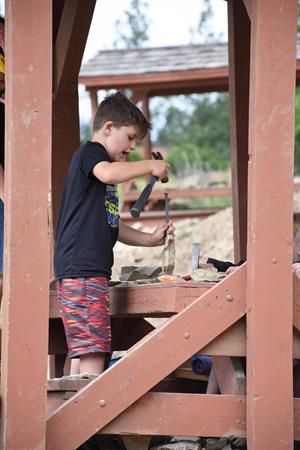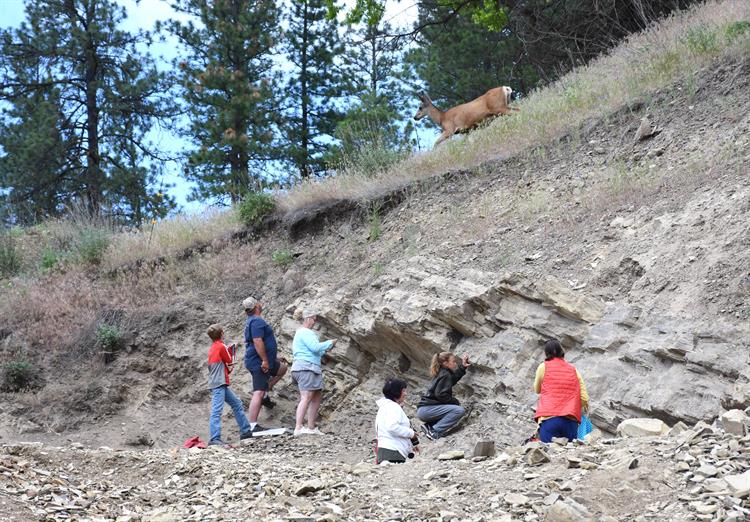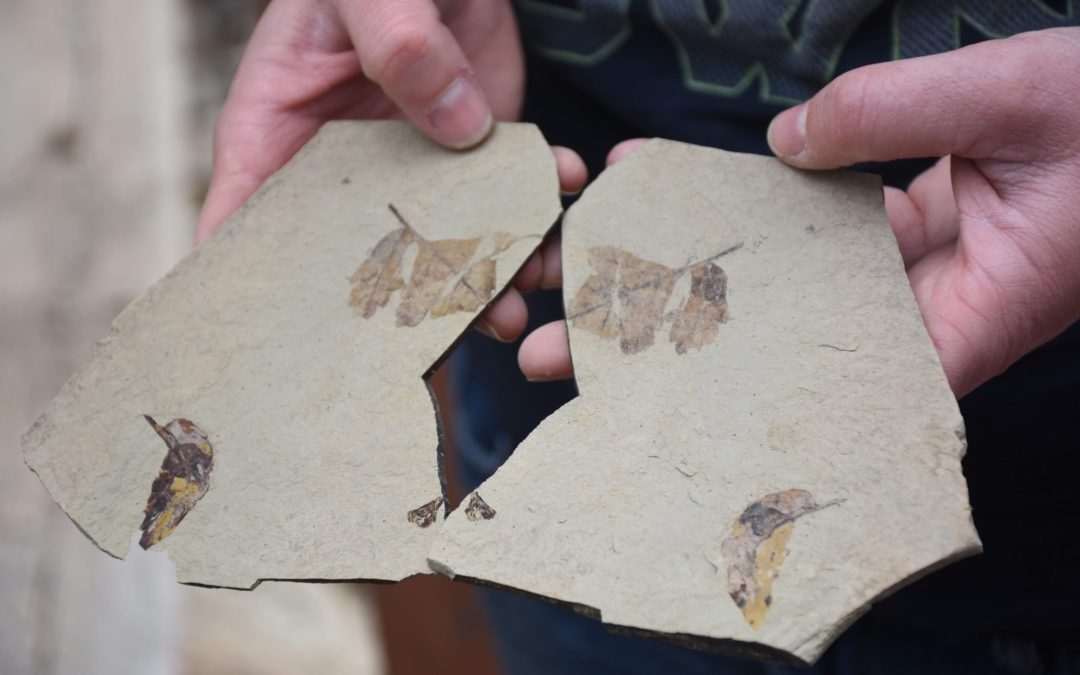For nearly 20 years, the Republic library has been making ancient history a little more accessible to its patrons.
Through a partnership with the Stonerose Interpretive Center, families can dig for fossils in
a 49.5-million-year-old lake bed that sits at the edge of the largest city in Ferry County.
This year, about 50 people participated in the program on June 19, most of them leaving with a handful of history that they can keep.
“This is a local thing that a lot of kids just never get to experience,” said Republic Librarian Gailene Hooper. “They get to discover a local treasure.”
 Stonerose
Stonerose
is considered one of the 20 best fossil sites in the world, and one of the top five from the Eocene age. Miners digging for gold and other minerals
first discovered fossil fish and plants in the shale in and around Republic in the early 1900s. Over the next several decades, geologists studied the
rocks around the community. The site has been studied by world-class paleontologists and featured in several geology and science publications.
In 1997, a large group of paleontologists from the Smithsonian Institution, National Museum of History, Denver Museum of Natural History, and the Burke
Museum of Natural History spent five days systematically working through a section of the fossil site, discovering and cataloging the fossils they
found.
In 1989, the interpretive center was opened to allow for monitored collection of fossils by the general public for a fee.
Once a year, they can do it for free through the Republic library program. The library is one of two North Central Regional Library branches in Ferry County.
All fossils found at the site must be examined by staff from the center. If they are a new discovery, the fossil remains in the museum or is sent to a
university for further research. The person who found it is credited with the discovery.
During this year’s library program, Hooper helped families find the right kind of layered rocks to examine for fossils. They then used a chisel and hammer
to tap apart the layers to look for treasures inside. Many people found leave imprints, pine needles, worm tracks, mineral deposits, and more.
“For many of these people, this is just the beginning of what will become a lifetime of fossil hunting,” Hooper said.

